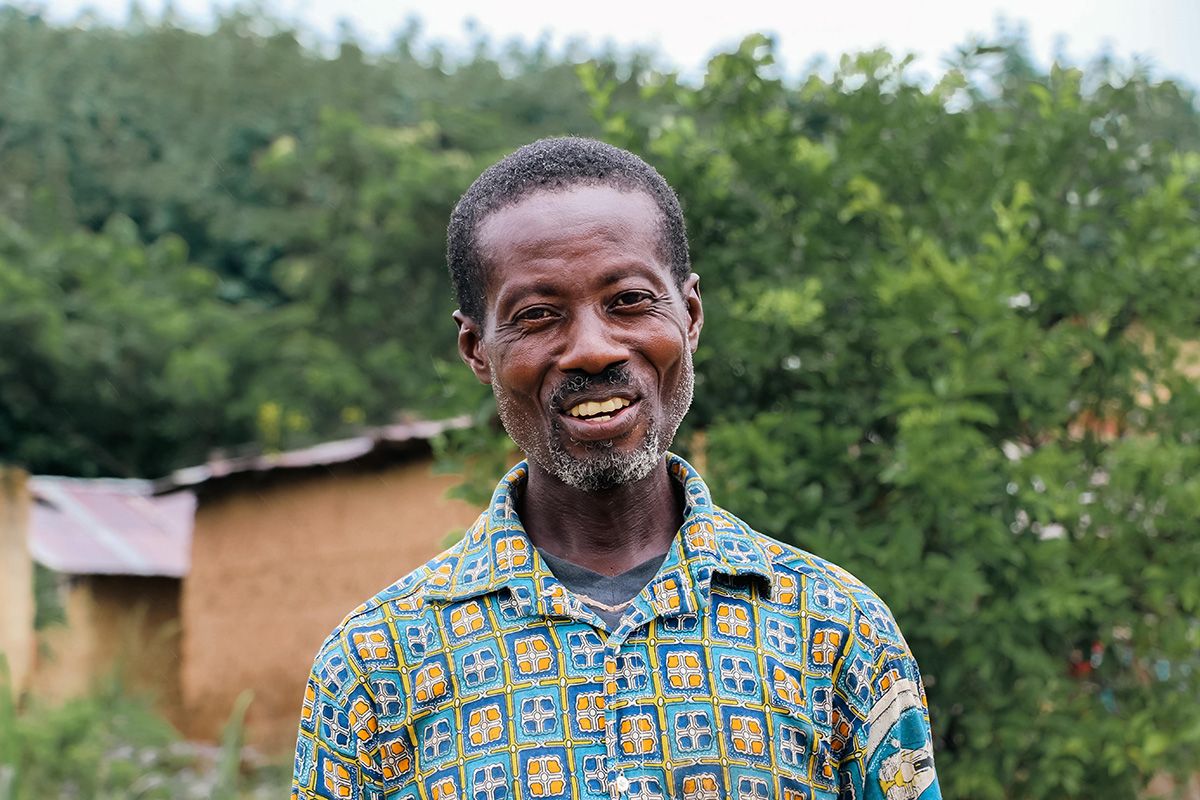Initiated in 2020, the project financed by Reforest'Action in the regions of Agnéby-Tiassa, Indénié Djuablin and Mé, in eastern Ivory Coast, is led in the field by the company Agro-Map, in cooperation with the Ministry of Water and Forests. The project involves developing agroforestry within cocoa production chains, creating private and community forests, and restoring national classified forests. It provides direct support for reforestation programs launched by the Ivorian government with the aim of restoring 20% of the country's forest cover by 2030. Three years of implementation in the field have already resulted in the planting of over 920,000 trees of 14 different species, with the aim of sustainably regenerating forest ecosystems and contributing to the transformation of the cocoa industry.

The impact of forest degradation on the health of the cocoa crop
In Ivory Coast, 92% of primary forests have disappeared in half a century
Since the last century, Ivory Coast has seen an accelerated degradation of its forests. Logging, mining, urbanization and extensive slash-and-burn agriculture have all gained ground on Ivory Coast's natural forests. Since the country's independence in 1961, Ivory Coast has lost 92% of its primary forests, leading to large-scale erosion of plant and animal biodiversity and climate change at regional and global level. Today, forests occupy 9.2% of the national territory, compared with around 45% sixty years ago. With decreasing rainfall and longer periods of drought, local communities' harvests are dwindling, and their food and economic security is compromised. This threatens the country's entire ecological as well as its economic and social balance.
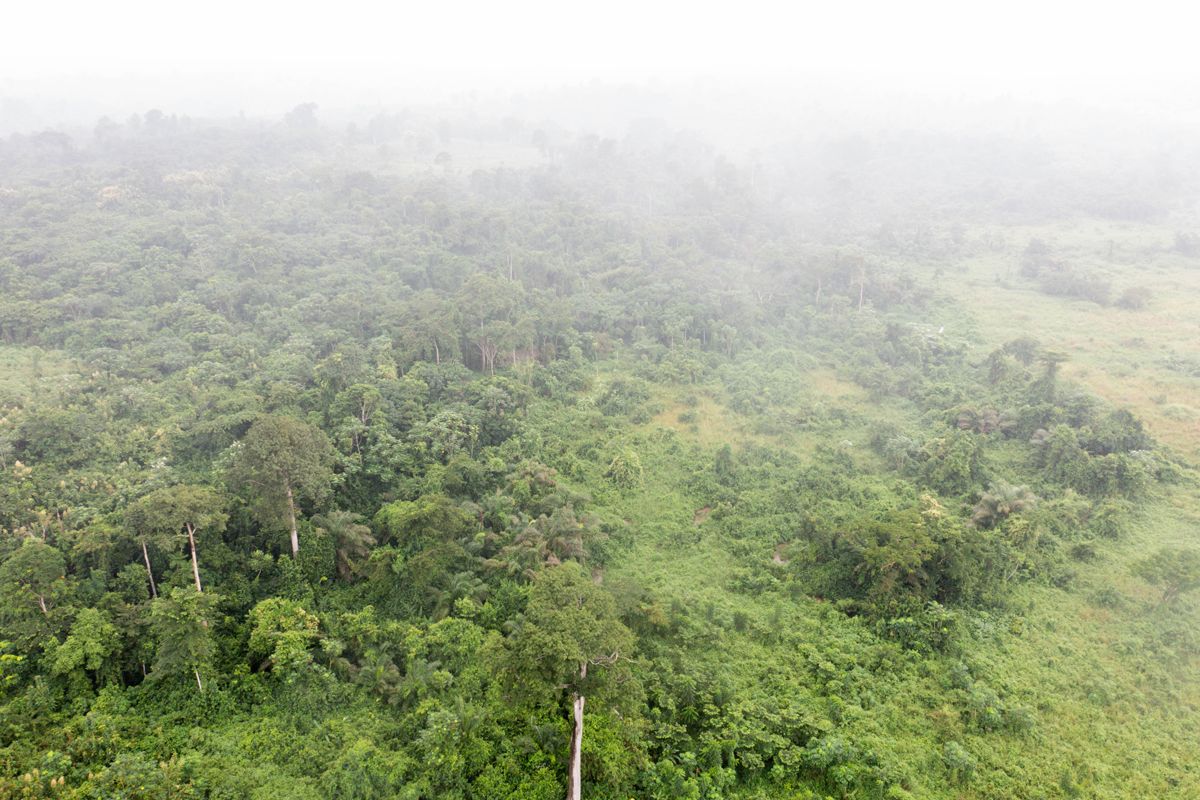
Deforestation-induced climate change threatens the cocoa industry
The cocoa sector, in particular, has been severely weakened by worsening hydro-climatic conditions. Ivory Coast is currently the world's leading cocoa producer (2.2 million tonnes in 2022), ahead of Ghana (750,000 tonnes) and Ecuador (370,000 tonnes). Cocoa accounts for 40% of its exports, 14% of its GDP and provides income for 20% of its population. But the industry, which today counts one million producers in Ivory Coast, is faced with the question of whether cocoa plantations will even be able to survive by 2050. For years, Ivory Coast's cocoa growers have favored the expansion of monoculture cocoa plots to the detriment of forests. Today, although the majority of cocoa crops are the result of deforestation, i.e. plots have been established in the place of forests, they need forest cover to achieve the best possible compromise between crop yield and longevity, thanks in particular to the shade and moisture that the trees provide for the cocoa trees beneath. But there's another threat to cocoa farming: the structural decline in cocoa yields caused by soil impoverishment in monoculture plots, with no regard for good farming practices. So how can we ensure the long-term future of this industry, which is vital to the country, and move it towards more sustainable production methods with a view to zero deforestation?
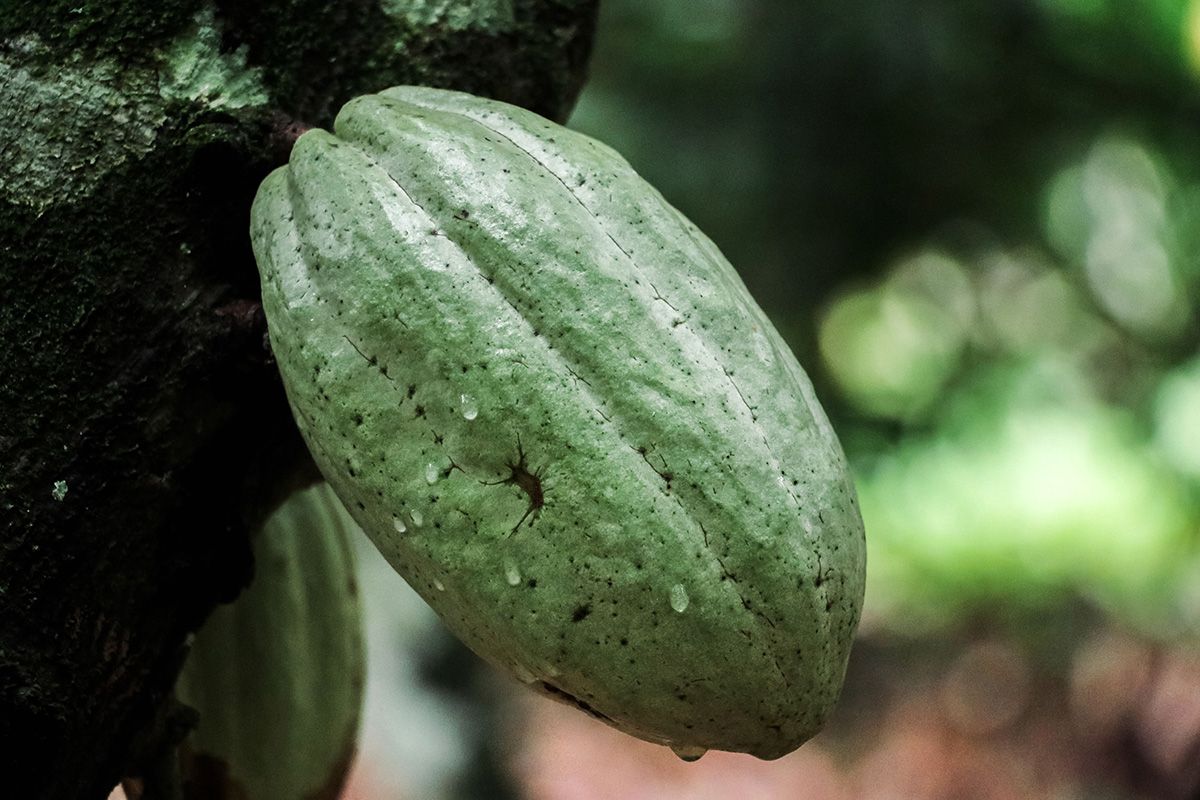
A regenerative project to help safeguard the Ivorian cocoa industry
The project, funded by Reforest'Action since 2020, has the dual aim of contributing to both the regeneration of Ivorian forest cover, and the development of agroforestry within cocoa fields - two essential strands of action to safeguard and enhance the value of the Ivorian cocoa supply chain over the long term. With the support of the Ministry of Water and Forests, the project is being implemented in the field by the Ivorian company Agro-Map, which in September 2023 was awarded the Prix de l'Excellence by the Ivorian government as the best reforestation player in Ivory Coast.
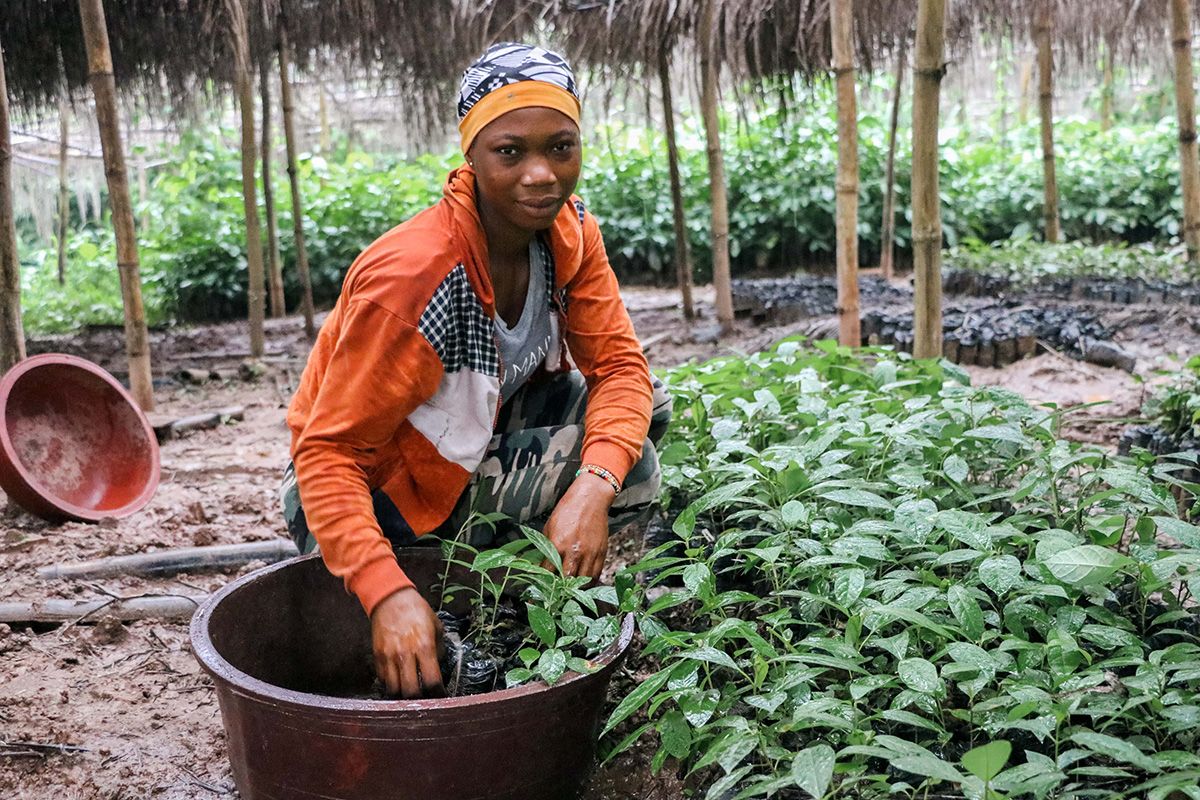
Breaking the link between deforestation and cocoa production
National target: 6 million hectares of forest restored by 2030
In Ivory Coast, the urgent need is to restore degraded forests and regenerate forests that have disappeared due, in particular, to cocoa production. Since 2018, the Ivorian government has adopted a new forest policy that aims to recover 6 million hectares of forest by 2030, which implies doubling the country's forest cover from 9.2% to around 20%. Our project contributes directly to this ambitious objective, firstly by helping to restore degraded classified forests, and secondly by supporting cocoa producers in the creation of community and private forests. In this way, cocoa farmers play a direct part in reforestation and forest preservation, and help to break the link between their industry and deforestation.
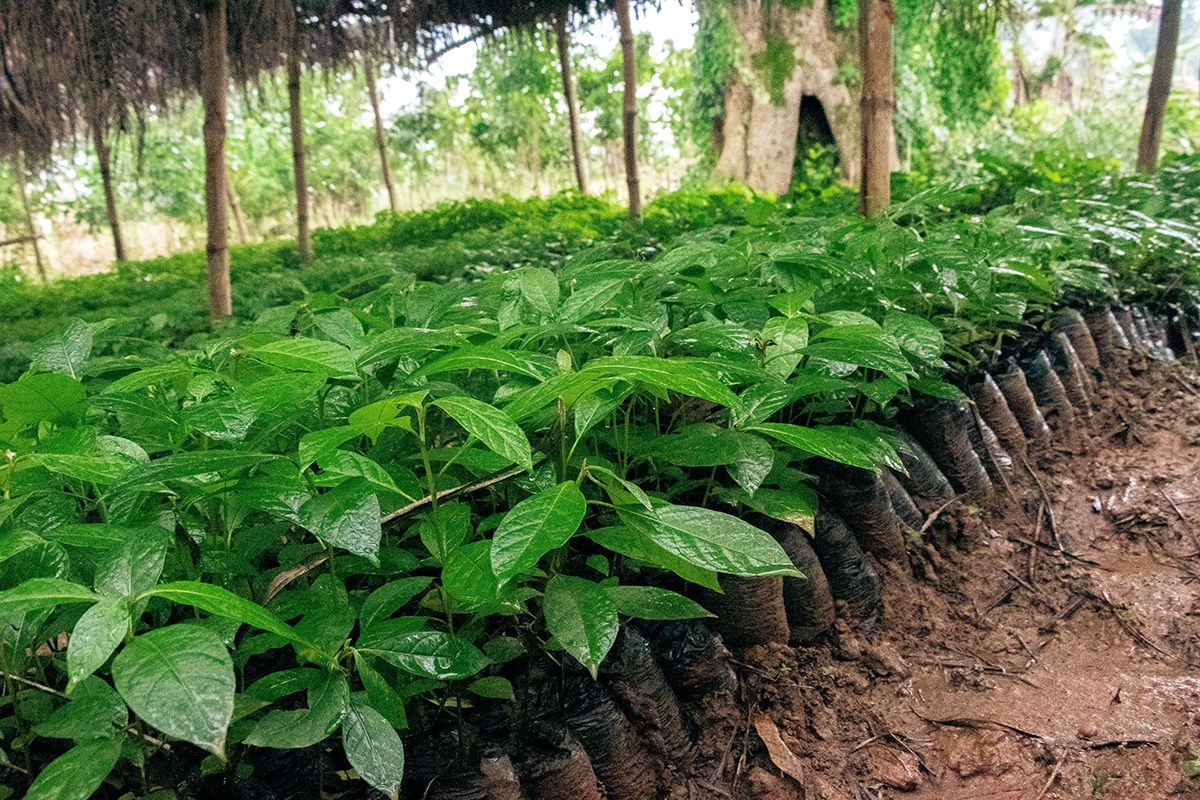
Restoring degraded islands to ensure the continuity of classified forests
Managed on a long-term basis by the Société de Développement des Forêts (SODEFOR), a state-owned company under the supervision of Ivory Coast's Ministry of Water and Forests, Ivory Coast's classified forests are now protected from logging. However, they still contain pockets of forest that have been severely degraded by past deforestation. To help restore them, our partner Agro-Map, in conjunction with the Water and Forestry Department, allocates degraded plots to villagers within these forests. They are then encouraged to grow food crops such as chillies and manioc, provided they also plant forest and fruit trees. Combining these short-cycle food crops with the planting of forest trees keeps villagers interested in the upkeep of these plots, and ensures that the trees grow in optimal conditions. Since the project was launched in 2020, 142,876 trees have been planted in the Séguié, Rasso and Béki classified forests. These trees, of various forest species (Framiré, Fraké, Mahogany, Cedrela, Teak...), will help to ensure the ecological continuity of these forests and to reconstitute dense, stable and perennial forest ecosystems.
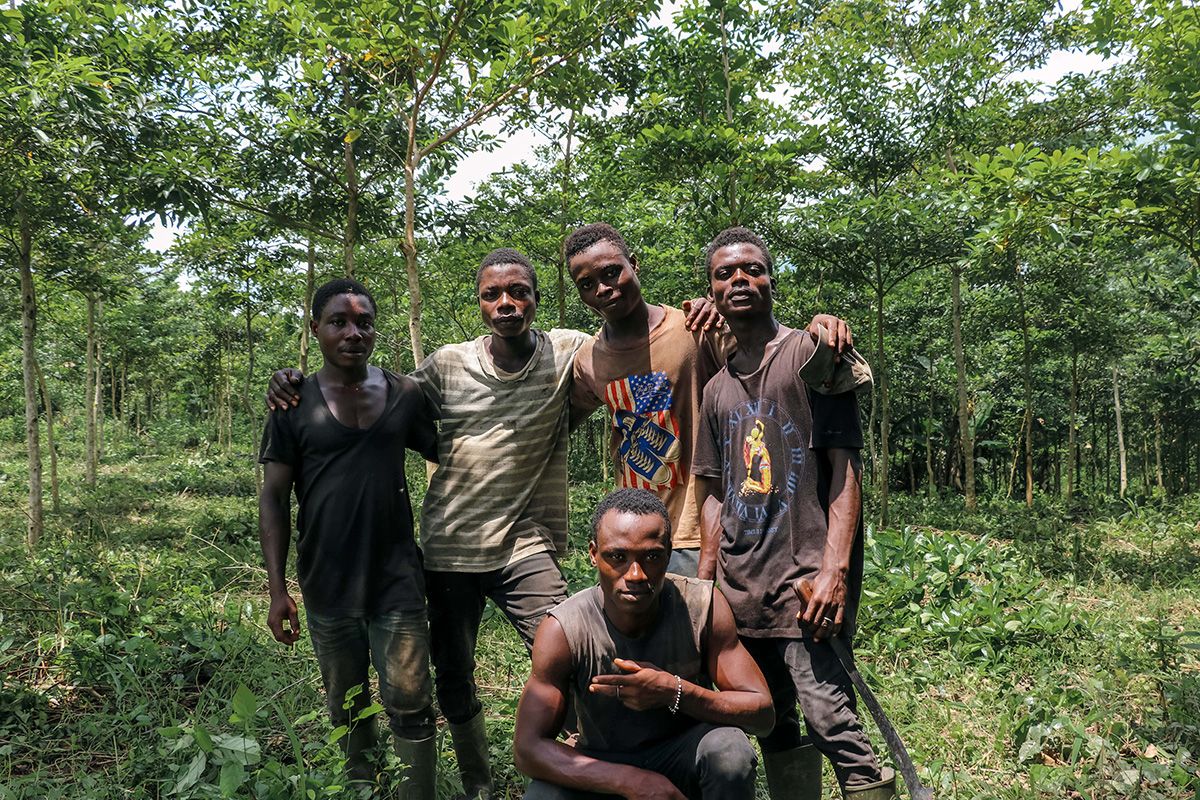
Creating new forests to increase forest cover
At the same time, new forests are being planted by local communities. Created on land belonging to producers or community plots, they will be used for food purposes, thanks to fruit trees such as Akpi and Kplé, and will enable communities to market non-timber forest products such as seeds. Some species, such as Fraké and Tiama, will be used for medicinal purposes. In the long term, others will be used to produce timber and firewood, such as Fraké, Framiré, Teak, Niangon and Tiama. Nearly 306,500 trees have been planted since 2020. Around 20,000 additional trees have been planted on the edges of villages over the past three years, at the request of local authorities and communities, to mark territorial boundaries and contribute to better understanding within communities.
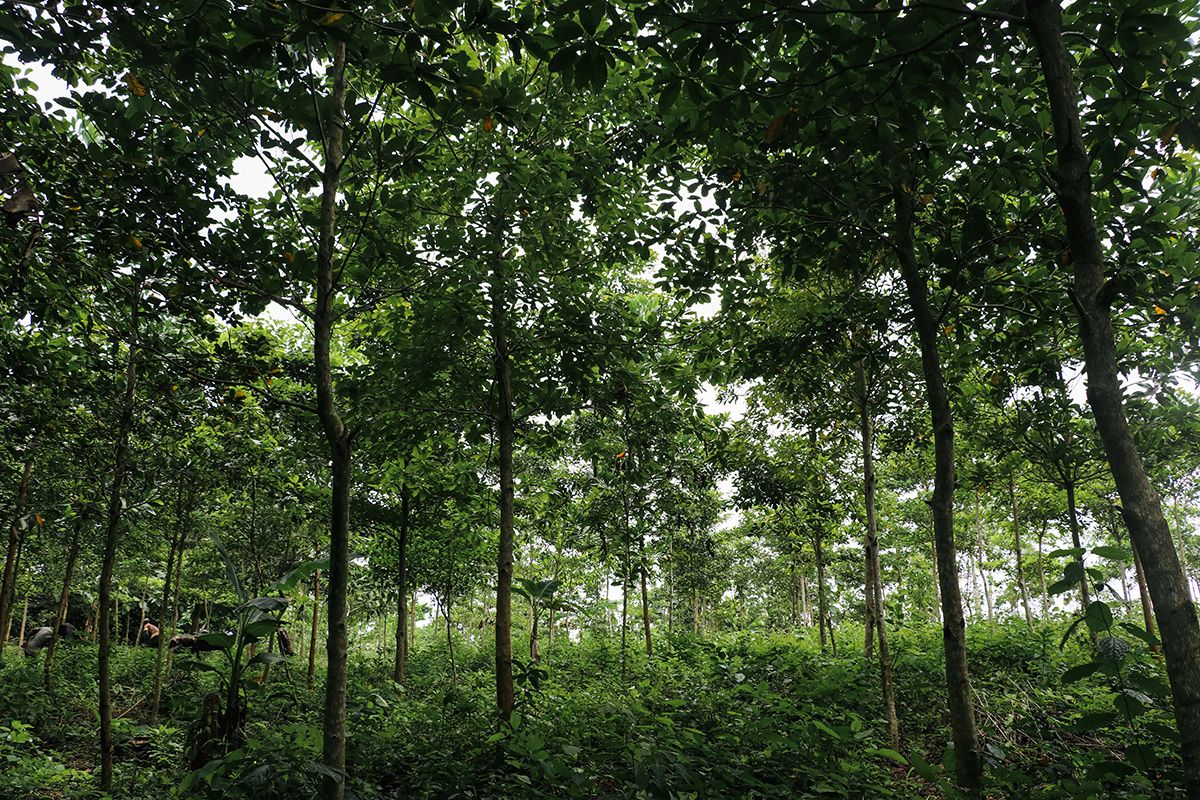
Towards a transformation of the Ivorian cocoa industry
Agroforestry for more sustainable cocoa production
With a view to contributing to the extension of national forest cover, the cocoa industry itself can participate in the reintroduction of trees on a landscape scale through agroforestry. This sustainable solution, which makes it possible to reconcile trees and cocoa crops without further degrading the surrounding forests, also has the advantage of offering positive impacts for the cocoa supply chain itself.
- Micro-climate. By introducing forest and fruit trees into cocoa plots, agroforestry aims to create a microclimate beneficial to cocoa productivity. The trees planted in the plots increase humidity and limit the impact of drought on crops by providing shade for the cocoa trees, thus limiting evapotranspiration and cooling the ambient air.
- Controlling pests and diseases. When properly modulated, the shade provided by agroforestry trees helps to regulate cocoa tree pests, such as brown pod rot caused by a fungus (favored by overly dense shade), and mirids, insects that cause cocoa tree dieback (which swarm when shade is absent or too light). According to CIRAD, farmers can reduce pesticide inputs and save up to 70% of the phytosanitary protection budget for an intensively managed plot.
- Water availability. Agroforestry shading also protects the soil from sunlight and keeps it cool and moist, improving rainwater infiltration and the ability of cocoa trees to draw water from the soil.
- Soil health. This approach improves the health of soils degraded by decades of monoculture. By promoting humidity in the litter within the cocoa plantation and adding organic matter to the soil, agroforestry shade trees can act as reservoirs for fungi. The presence of these trees can thus influence the quantity and diversity of mycorrhizae present in the soil and within the surface root system of cocoa trees. These mycorrhizae play a key role in the nutrition and health of cultivated cocoa trees, as well as their resistance to climatic hazards, because they enable better assimilation of phosphorus and nutrients by cocoa trees.
- Nitrogen fixation. Among the trees planted in agroforestry, an atmospheric nitrogen-fixing species, Acacia mangium, is used to increase soil fertility. Its roots form a symbiotic relationship with soil bacteria (Rhizobium), which fix atmospheric nitrogen and transform it into a nitrogenous substance that can be assimilated by cocoa trees. This natural phenomenon reduces the need for chemical nitrogen fertilizers.
- Carbon storage. The carbon captured by agroforestry trees and stored in their above-ground and below-ground biomass (leaves, trunk, roots, branches) is then returned to the soil through the fall of leaves and dead wood, enriching humus with organic matter.
- Biodiversity. Agroforestry trees also help to restore biodiversity by providing shelter for a diverse range of fauna, which is essential to cocoa farming thanks to its various functions, such as pollination.
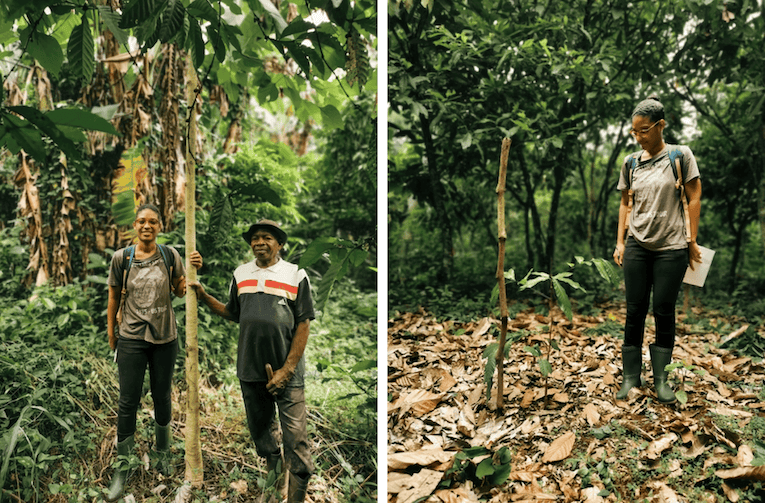
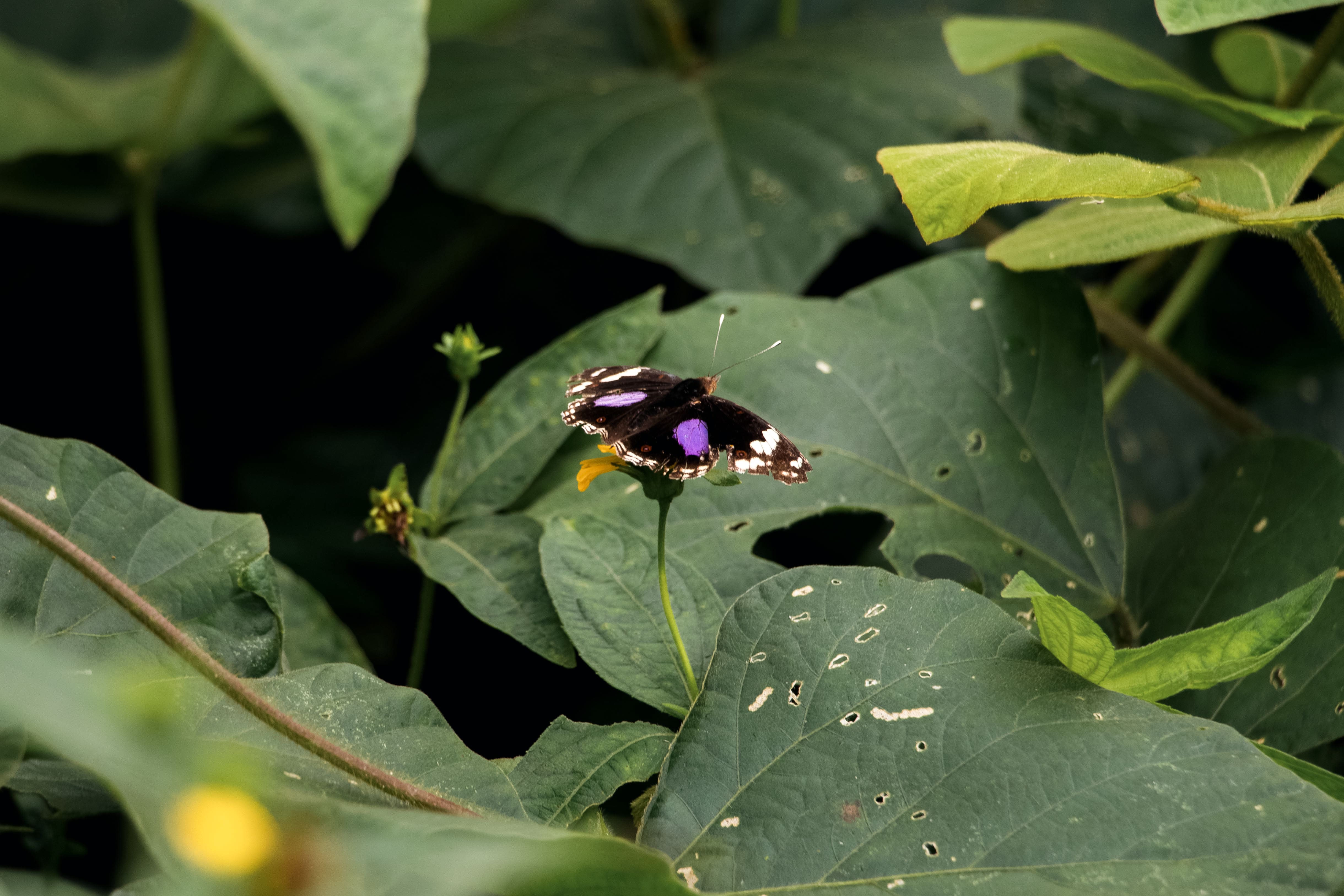
In the three years since the project was launched, some 450,000 trees have been planted in agroforestry on the fields of nearly 4,000 cocoa farmers. Among the species planted are slow-growing forest trees, such as Tiama and Niangon, and fast-growing forest trees, such as Fraké, Framiré, Gmelina, Ilomba, Cedrela, Mahogany and Acacia, which, thanks to their canopy, provide shelter for the underlying cocoa trees and wood from fallen branches. Fruit trees such as Kplé, Akpi and Petit Cola will produce fruit to feed farmers' families or sell on markets.

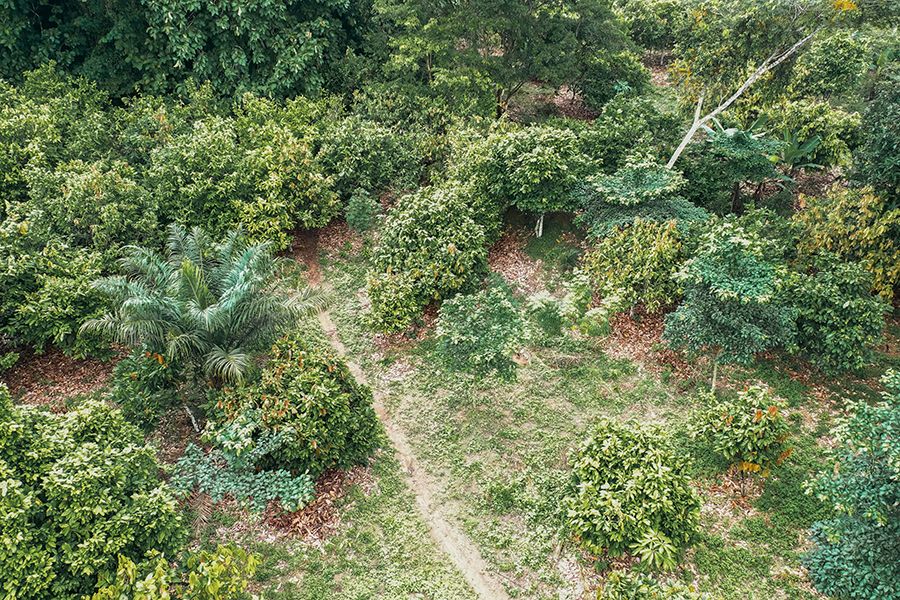
Producers’ commitment: a key factor in the project's success
Awareness-raising among villagers, cocoa producers and local cocoa cooperative managers is a key component of the project. It has been carried out by our technical partner Agro-Map over the past three years, and has attracted the participation of over 9,000 people. Through awareness-raising workshops, animation groups and meetings with local authorities in the villages involved in the project, producers and their families have been trained in agroforestry techniques and the maintenance of planted trees, as well as in the importance of preserving the surrounding forest ecosystems, particularly in the face of frequent forest fires. These various actions have helped to make the project widely known in the Agnéby-Tiassa, Indénié Djuablin and Mé regions, and to ensure the involvement of local communities in the project. Going out into the field to meet men and women has also enabled Agro-Map to identify new sites for reforestation or agroforestry development, and so continue to develop the project and its many benefits.
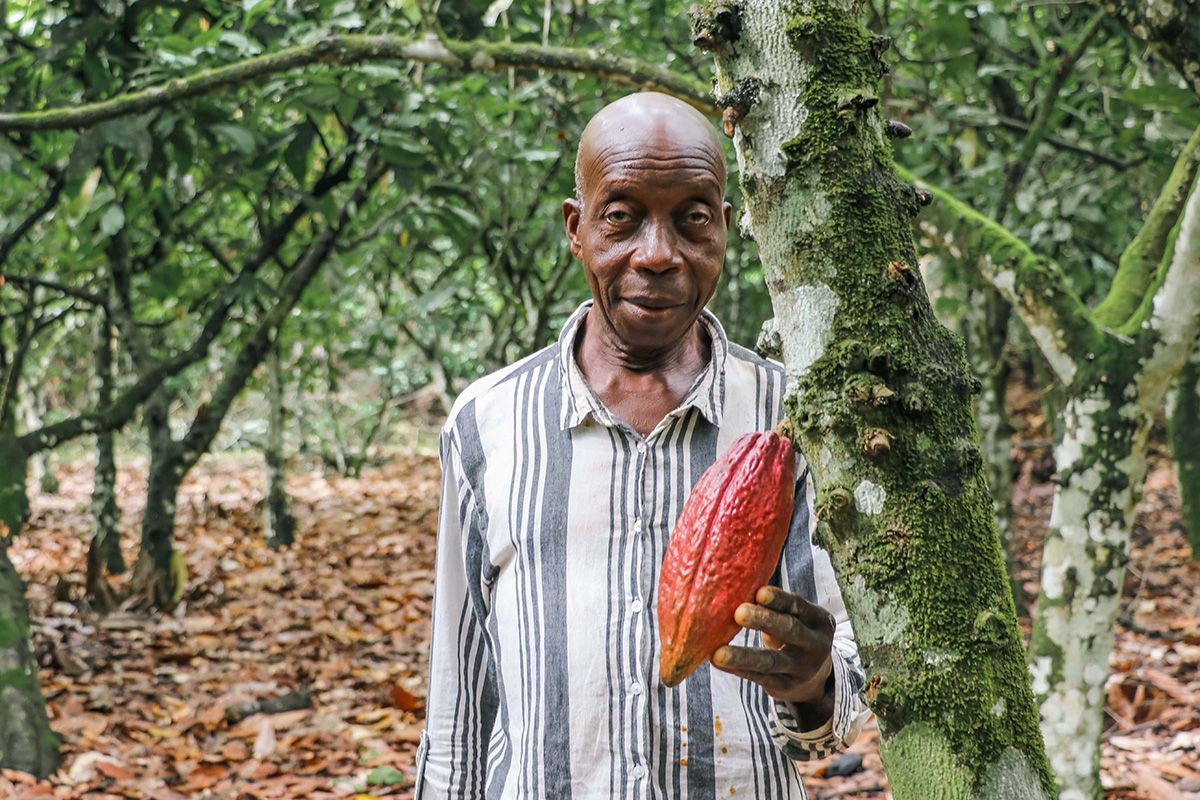
Ecosystem services for the benefit of local communities
In addition to its strong environmental impact and its contribution to transforming the cocoa industry, the project also generates valuable socio-economic benefits. During an audit conducted by Reforest'Action in September 2022, the local communities involved have already testified to the multiple benefits produced by the project on their living conditions. The project as a whole has helped to generate employment, particularly among the younger generation, and to improve community incomes by involving villagers in tree nursery production, planting and maintenance activities. In particular, women's communities have become massively involved in the project, which has enabled them to strengthen their technical capacities and autonomy. Agroforestry will also contribute to the food security of cocoa farmers and their families, as well as diversifying their income through the sale of seeds and fruit from agroforestry trees when they are mature enough to produce them. Fast-growing forest species, meanwhile, can provide communities with wood from their fallen branches. All these benefits contribute to making the local cocoa industry more sustainable and redistributive, while helping to restore forests that have suffered for decades.

